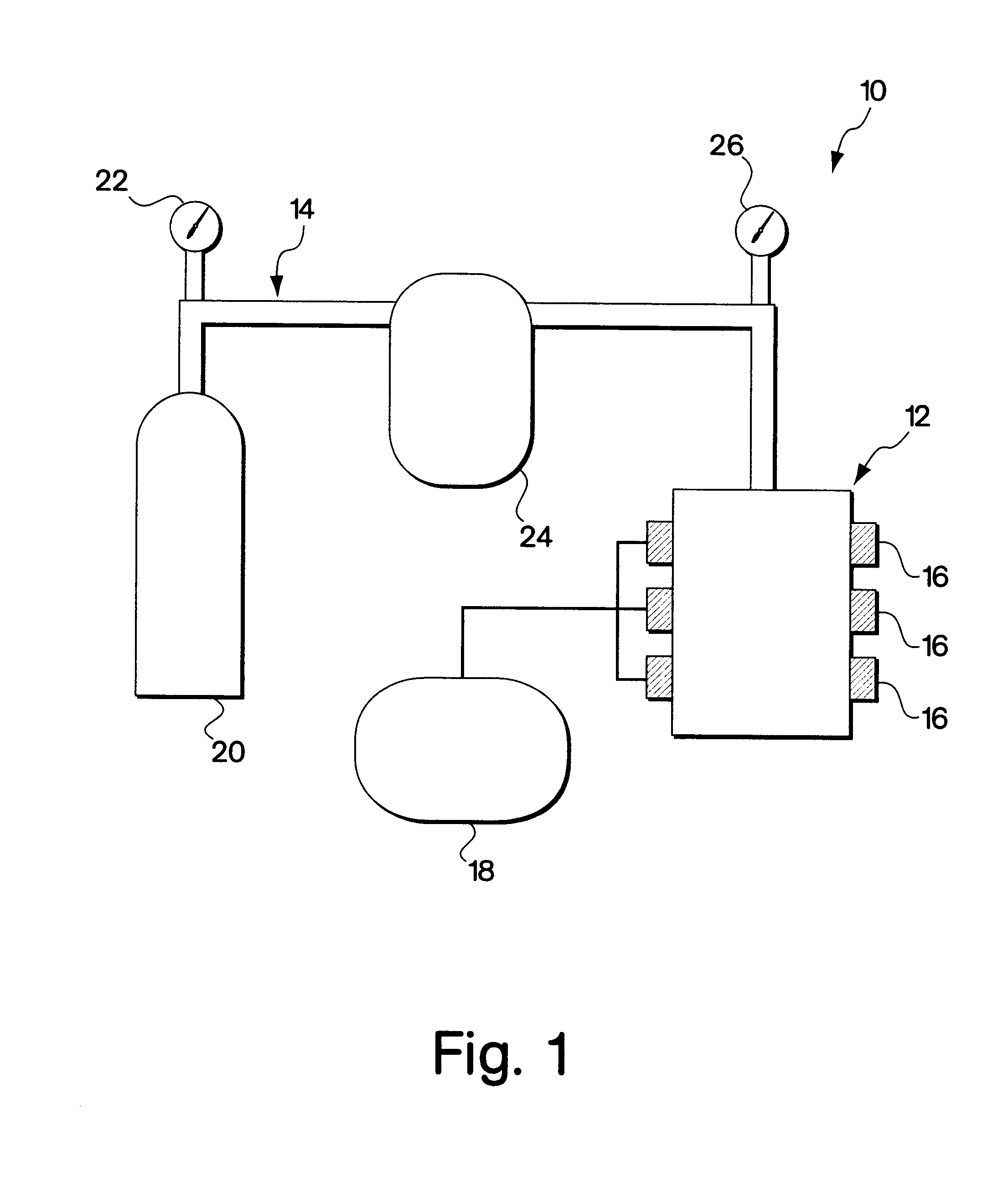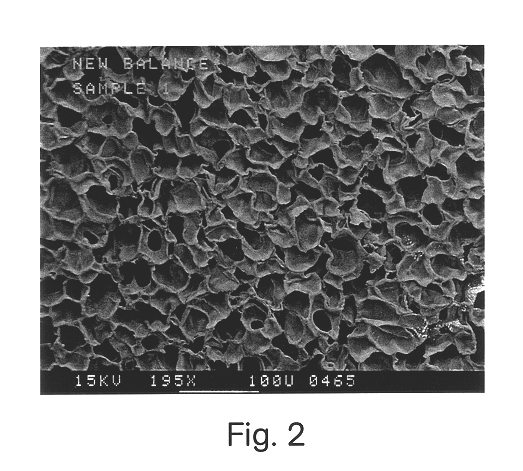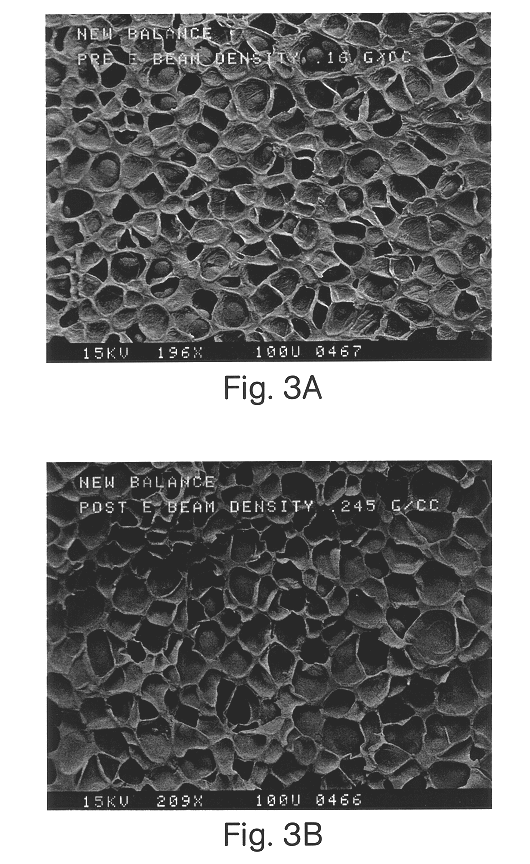Microcellular thermoplastic elastomeric structures
a thermoplastic elastomeric and micro-cellular technology, applied in the field of foaming structures, can solve the problems of low strength, difficult to produce foamed material of substantially uniform density, and difficulty in conventional foaming methods
- Summary
- Abstract
- Description
- Claims
- Application Information
AI Technical Summary
Problems solved by technology
Method used
Image
Examples
Embodiment Construction
An unfoamed 3 mm thick sample of injection molded ENGAGE-AFFINITY.TM. (SM-1300, available from Dow Chemical Co.) having a density of 0.87 gm / cm.sup.3, a melt index of 30, and a Mooney viscosity of 2.5 was used for the experiment.
The sample was foamed using a system as in FIG. 1, which illustrates a typical microcellular batch foaming system 10. The foaming system 10 includes a foaming chamber 12 and a blowing agent delivery system 14. The foaming chamber 12 includes band heaters 16 surrounding the chamber 12 for providing heat to the chamber 12, and a temperature controller 18 for controlling the temperature in the chamber 12. The blowing agent delivery system 14 includes a source of blowing agent 20, a pressure controller 22 for controlling the delivery pressure of the blowing agent 20, pressurizing means 24 for pressurizing the blowing agent, thereby preferably rendering the blowing agent supercritical, and a pressure controller 26 for controlling the delivery pressure of the supe...
PUM
| Property | Measurement | Unit |
|---|---|---|
| average cell size | aaaaa | aaaaa |
| average cell size | aaaaa | aaaaa |
| average cell size | aaaaa | aaaaa |
Abstract
Description
Claims
Application Information
 Login to View More
Login to View More - R&D
- Intellectual Property
- Life Sciences
- Materials
- Tech Scout
- Unparalleled Data Quality
- Higher Quality Content
- 60% Fewer Hallucinations
Browse by: Latest US Patents, China's latest patents, Technical Efficacy Thesaurus, Application Domain, Technology Topic, Popular Technical Reports.
© 2025 PatSnap. All rights reserved.Legal|Privacy policy|Modern Slavery Act Transparency Statement|Sitemap|About US| Contact US: help@patsnap.com



